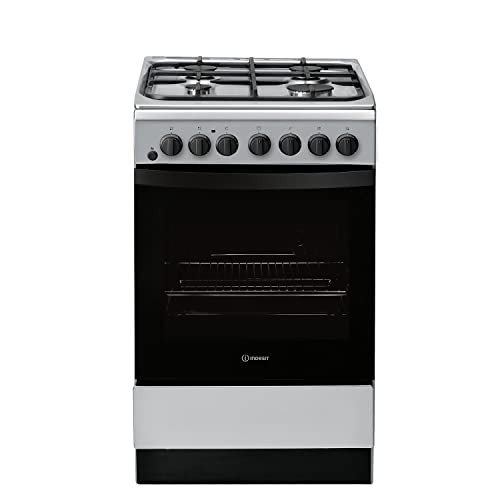Understanding Electric Ovens and Hobs: Your Guide to Cooking Efficiency
Electric ovens and hobs have transformed the culinary landscape, offering home cooks and professional chefs a trustworthy, efficient, and consistent method to prepare meals. As Buy Oven Online continue to affect device style, the efficiency and functionality of electric cooking systems have considerably enhanced. This short article explores the features, advantages, and factors to consider surrounding electric ovens and hobs, offering a detailed introduction for anyone seeking to upgrade or buy kitchen devices.
What Are Electric Ovens and Hobs?
Electric ovens are kitchen devices designed for baking, broiling, roasting, and other cooking techniques that need regulated heat. They utilize electric coils or convected heat components to generate and maintain the desired temperature. Electric hobs, frequently referred to as electric cooktops, are flat surface areas with heating components that allow pots and pans to be placed straight on them for cooking.
Table 1: Key Differences Between Electric Ovens and Hobs
| Function | Electric Oven | Electric Hob |
|---|---|---|
| Main Function | Baking, roasting, broiling | Heating pots and pans for cooking |
| Heating Method | Electric coils or radiant components | Induction, radiant, or ceramic aspects |
| Operation Temperature Range | Approximately 500 ° F (260 ° C | ) Varies by design; generally lower than ovens |
| Cooking Styles | Versatile; ideal for various dishes | Primarily stovetop cooking approaches |
| Space Requirement | Usually built into cabinetry | Frequently standalone or integrated options |
| Energy Consumption | Typically higher, depending upon usage | More energy-efficient with induction hobs |
Advantages of Electric Ovens and Hobs
When thinking about electric ovens and hobs, it's important to understand their numerous advantages, which can boost the cooking experience.
1. Consistent Heating
Electric ovens and hobs offer even and constant heating, which is crucial for numerous cooking methods. This makes sure that meals prepare evenly, lowering the possibilities of overcooking or undercooking certain areas of food.
2. Safety Features
Modern electric ovens and hobs come geared up with various security features to avoid accidents in the kitchen. For instance, many designs consist of automatic shut-off functions, hot surface area signs, and child safety locks.
3. Easy to Use
Unlike gas models, electric ovens and hobs are uncomplicated and user-friendly. The simplicity of turning on a dial or pushing a button makes them available for cooks of all ability levels.
4. Versatile Cooking Options
With various cooking methods possible, from baking to simmering, electric models are versatile sufficient to accommodate a vast array of cooking designs and preferences.
5. Cleaning up and Maintenance
Electric ovens normally include smooth surface areas that are easy to clean, especially designs with self-cleaning capabilities. Hobs, especially induction types, also provide a flat surface that is easy to wipe down, making upkeep a breeze.
Popular Types of Electric Ovens:
- Conventional Ovens: Ideal for conventional baking and roasting.
- Convection Ovens: Circulate hot air for faster, even cooking.
- Microwave Ovens: Use electro-magnetic radiation for fast heating and cooking.
- Toaster Ovens: Small countertop ovens for quick tasks.
Popular Types of Electric Hobs:
- Induction Hobs: Utilize electromagnetic fields for fast heating and energy effectiveness.
- Glowing Hobs: Feature electric coils that warm up to prepare food.
- Ceramic Hobs: Offer a smooth surface and are easy to clean.
Considerations When Choosing Electric Ovens and Hobs
While electric ovens and hobs provide numerous benefits, a number of factors ought to be taken into account to ensure the right suitable for your kitchen:
1. Space Availability
Evaluate the offered kitchen area before buying. Identify whether you need a built-in model or a freestanding appliance, and determine the measurements thoroughly to guarantee a good fit.
2. Cooking Needs
Determine your cooking practices and preferences. If you routinely bake big amounts or cook complex meals, consider an oven with innovative functions like convection settings or several racks.
3. Energy Efficiency
Try to find energy-efficient models that can conserve on utility bills gradually. Energy Star-rated devices can be especially economical.
4. Budget
Set a realistic spending plan that represents both the preliminary purchase and continuous operating expense. In addition to the home appliance expense, consider setup and potential repairs.
5. Extra Features
Consider whether features like smart innovation, programmable settings, or steam cooking options are essential for your cooking style.
Frequently asked question Section
Q: How do I tidy my electric oven?
A: Most electric ovens included self-cleaning alternatives. If your model does not have this function, enable the oven to cool, then clean down surfaces with a mix of baking soda and water or a business oven cleaner.
Q: Is induction cooking safe?
A: Yes, induction cooking is considered safe as the heating aspect only activates when compatible cookware is in contact with it, lowering the threat of burns.
Q: How long does it take for an electric oven to pre-heat?
A: Preheating times differ based on the oven's model and temperature setting however usually range from 10 to 15 minutes.
Q: Can I use any cookware on an induction hob?
A: No, only ferromagnetic pots and pans is suitable with induction hobs. Look for induction compatibility before usage to prevent damage.
Q: What is the difference between a stove and a conventional electric oven?
A: A convection oven consists of a fan that distributes hot air, making sure even cooking and decreased cooking times compared to a standard electric oven, which does not have this function.
Electric ovens and hobs supply a contemporary service to numerous cooking needs, providing performance and dependability in the kitchen. As consumers evaluate their alternatives, understanding the features, types, and factors to consider will enable them to make informed choices. Whether one is an occasional cook or a cooking lover, electric home appliances can boost the overall cooking experience, bringing convenience and creativity to the table.

